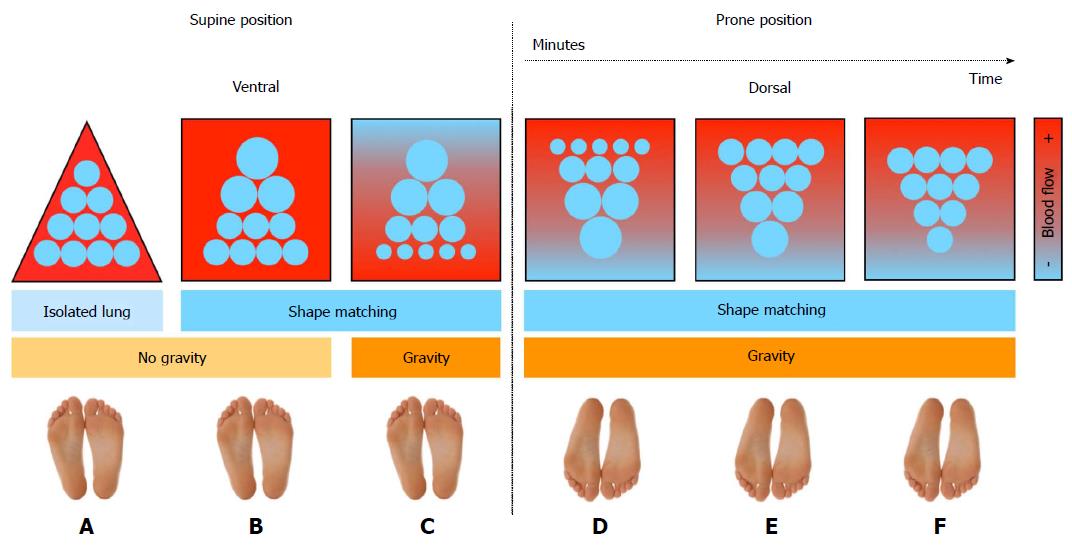Copyright
©The Author(s) 2016.
World J Crit Care Med. May 4, 2016; 5(2): 121-136
Published online May 4, 2016. doi: 10.5492/wjccm.v5.i2.121
Published online May 4, 2016. doi: 10.5492/wjccm.v5.i2.121
Figure 2 A summary showing the sequential effects of prone position on acute respiratory distress syndrome diseased lung.
A: Original shape of the isolated lung; the dorsal side is bigger than the ventral one (no gravity); B: The result of shape matching: alveolar units have bigger size ventrally and smaller size dorsally (no gravity); C: The additive effect of gravity on ventilation and perfusion: blood flow is being diverted toward dependent regions, while dependent pulmonary units close; D: Immediately after turning to the prone position, pulmonary blood flow in dorsal regions of the lung is maintained unmodified; E: Dorsal lung recruitment follows (greater than ventral de-recruitment), gravitational forces compress the ventral region, but this effect is damped by regional expansion due to shape matching; F: Transpulmonary pressure and regional inflation distribution become more homogeneous throughout the lung resulting finally to better oxygenation.
- Citation: Koulouras V, Papathanakos G, Papathanasiou A, Nakos G. Efficacy of prone position in acute respiratory distress syndrome patients: A pathophysiology-based review. World J Crit Care Med 2016; 5(2): 121-136
- URL: https://www.wjgnet.com/2220-3141/full/v5/i2/121.htm
- DOI: https://dx.doi.org/10.5492/wjccm.v5.i2.121









